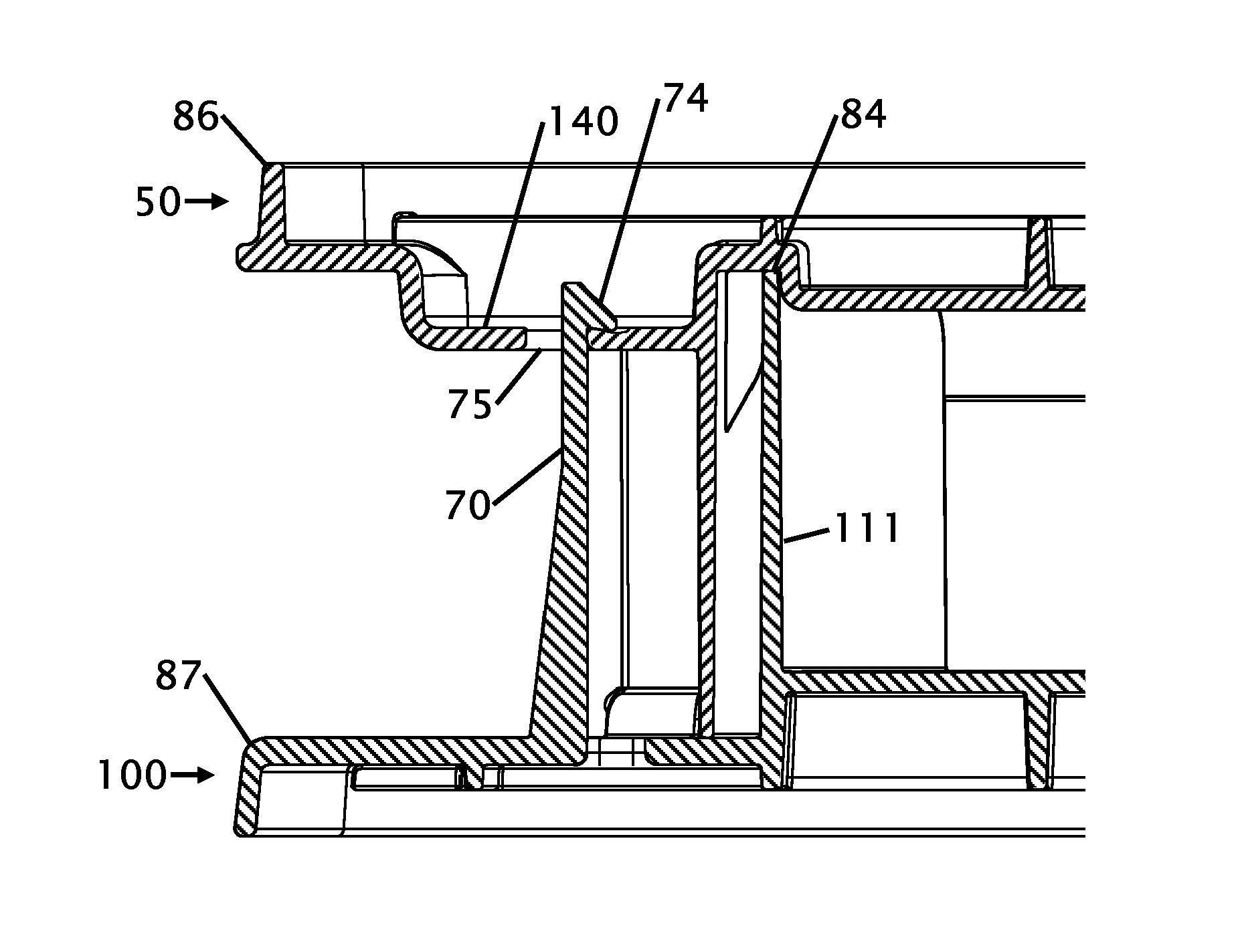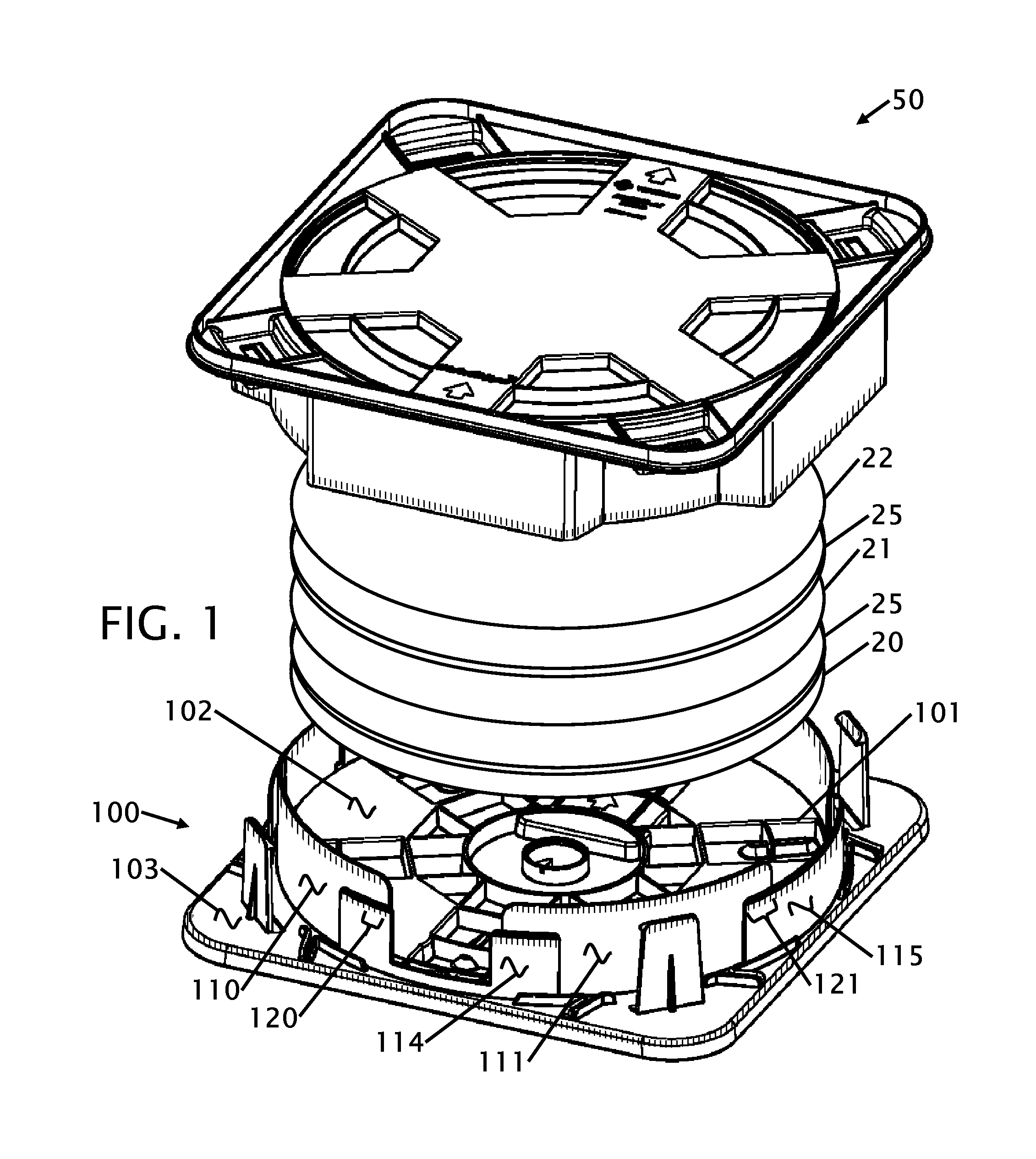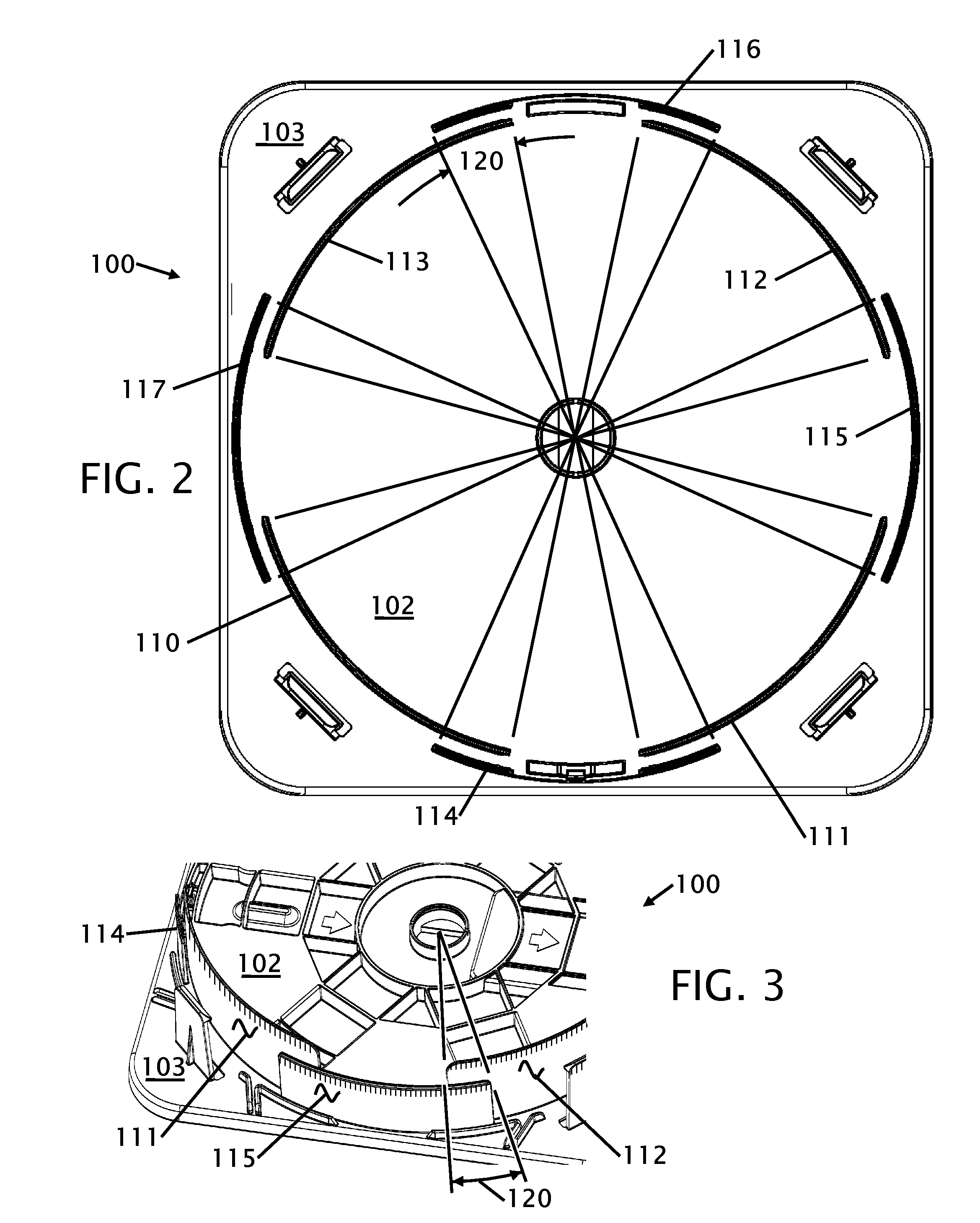Wafer container
a container and wafer technology, applied in the direction of containers, tray containers, packaged goods, etc., can solve the problems of affecting and not providing flexibility to absorb and cushion side impacts or drops, so as to increase the protection of semiconductor wafers
- Summary
- Abstract
- Description
- Claims
- Application Information
AI Technical Summary
Benefits of technology
Problems solved by technology
Method used
Image
Examples
Embodiment Construction
[0041]FIG. 1 shows a perspective exploded view of the wafer container with a plurality of wafers disposed between the two wafer container clam shells. A plurality of semiconductor wafers 20, 21 and 22 are shown between the top 50 and bottom 100 housing with wafer separators 25. The inside base surface 102 extends to the outside of the base surface 103 where the bottom housing has a ribbed pattern 101 that supports the bottom of the bottom most semiconductor wafer 20 and provides increased structural strength to the fairly plainer base surface 102 and 103. Both the top 50 and the bottom housings 100 have essentially planar rectangular or square bases. A plurality of inner rib walls 110 and 111 of the bottom housing 100 protect the semiconductor wafers from shifting side damage. These walls can flex to cushion side impact. They are formed in a segmented pattern in the bottom housing. The segmented ribs are shown and described in more detail with FIG. 2. A second set of segmented outer...
PUM
 Login to View More
Login to View More Abstract
Description
Claims
Application Information
 Login to View More
Login to View More - R&D
- Intellectual Property
- Life Sciences
- Materials
- Tech Scout
- Unparalleled Data Quality
- Higher Quality Content
- 60% Fewer Hallucinations
Browse by: Latest US Patents, China's latest patents, Technical Efficacy Thesaurus, Application Domain, Technology Topic, Popular Technical Reports.
© 2025 PatSnap. All rights reserved.Legal|Privacy policy|Modern Slavery Act Transparency Statement|Sitemap|About US| Contact US: help@patsnap.com



